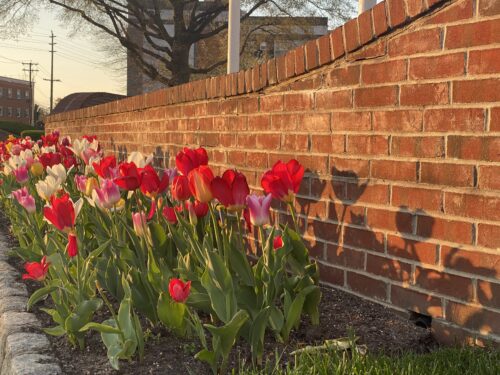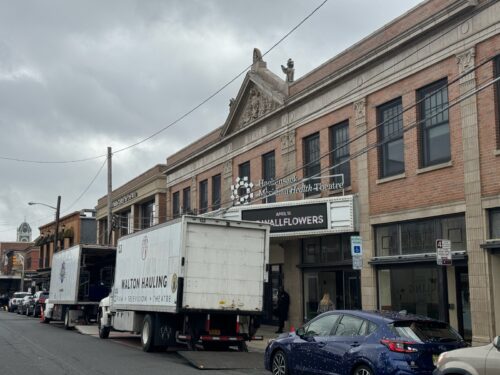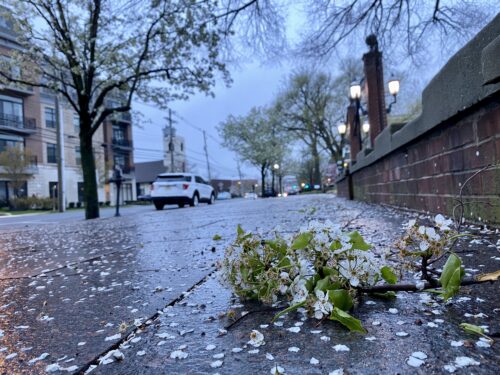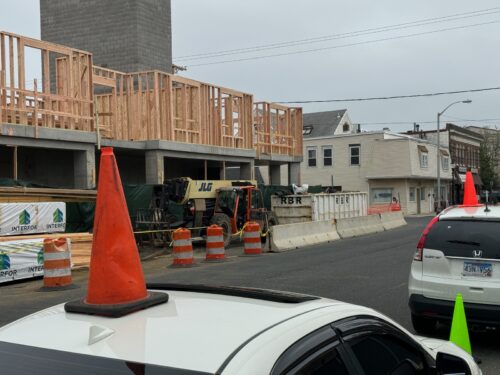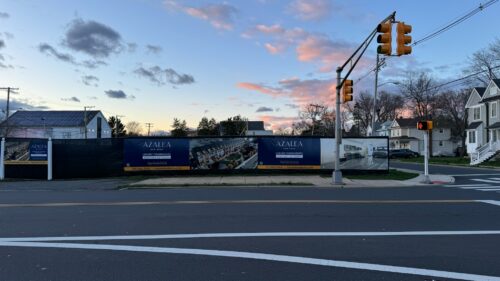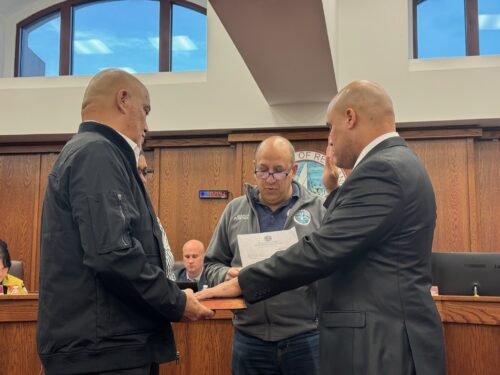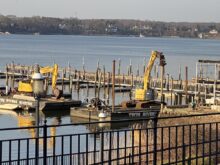
It took historic preservationist Mary Lou Strong more than a week to get back to redbankgreen after we called recently to inquire about her Middletown home going on the market.
She apologized for the delay, and said she simply wanted to be sure she could talk about it without crying.
It’s not just that the house located on a tongue-tip of land bound by Navesink River Road and the anchorage to the Oceanic Bridge is where Strong and her husband, George, raised three kids. Or that it’s filled with cherished antiques collected over a lifetime.
It’s that the house, built in Massachusetts before the United States was born, is itself the manifestation of the couple’s shared values when it comes to keeping history alive. And who knows if the next owner will want to bulldoze it into oblivion?


What’s now the kitchen was later added as a toll house for the road on which the house sat.
Disassembled in the 1930s, the chalk-numbered components of Smith’s house were stored in a former Civil War blanket factory when the Strongs learned about it in 1962. George Strong’s job as an investment banker had taken him from Boston to New York, and he and Mary Lou had bought the vacant parcel overlooking the Navesink. Though they’d just had an architect design a house for the property, they scrapped those plans, bought the Smith house for $15,000 and had the pile of lumber trucked down to the Jersey Shore.
Then, confronted with the task of re-assembling the pieces, Mary Lou tracked down a woodworker-turned-hermit who had taken the house apart three decades earlier and enlisted him to help put it back together while at the same bolstering it to contemporary building codes.
Many of the chalk markings on the lumber had disappeared, though, “so some of it was build-by-numbers, and some of it was build-by-jigsaw-puzzle,” said George.
The result was a grand house with cedar roof shakes that, on the sunny side of the house, have never had to be replaced, and rooms whose recessed-panel walls once showcased Smith’s wordwooking talents to prospective clients. A “good morning” stairwell, so named for the convergence of two sets of steps from the attic, is “my favorite feature of the house, with all it’s wonderful turnings,” said Mary Lou.
Now, the Strongs are in their 80s, the house is too much for them, and their children live out of state. So the couple is preparing to move to the Atrium at Navesink Harbor senior citizens building in Red Bank into an apartment with a new vista down their beloved river.
“It’s something we’ve lived with,” Mary Lou said of the eastward view from the house. “It’s different ever hour of the day. You could sit here all day and never tire of it.”
A listing for the Strong’s house puts the asking price at $1.2 million.
A past president of the Monmouth County Historical Association, Mary Lou Strong was vocal about preserving the Tredwell House Rumson, which was destroyed by fire in June, 2006. As a board member at Preservation New Jersey, she was instrumental in getting Red Bank’s T. Thomas Fortune House onto the organizations 2007 list of the state’s ten most-endangered historical sites. “I’m terribly concerned” about the fate of the Fortune house, she said.
But as to her own house, Stong says, “I just think somebody is going to come along who sees the warmth and character of the house and is going to take care of it.”
“We just have to find them,” George adds, noting that while the house is in a historic district and is considered historic itself, it’s not indigenous, “and so you could argue that it’s not historically significant.”
The Strongs are preparing to auction off many of the home’s numerous antiques, which include Nathaniel Smith’s will, which now hangs in a bathroom. No date for the sale has been set.
After leading a reporter on a tour of the house, Strong stopped in a doorway to the dining room, noted the similarities between the pilasters on a corner cupboard and those on the front door frame, and then settled in to a long moment of silence as she appeared to take in the room so that it might never be forgotten.
“It’s a nice room for parties,” she said softly.







